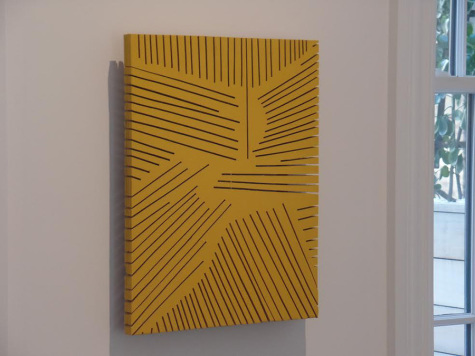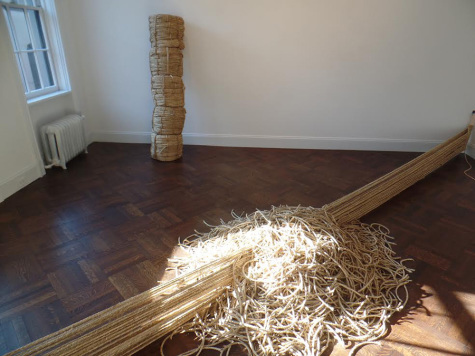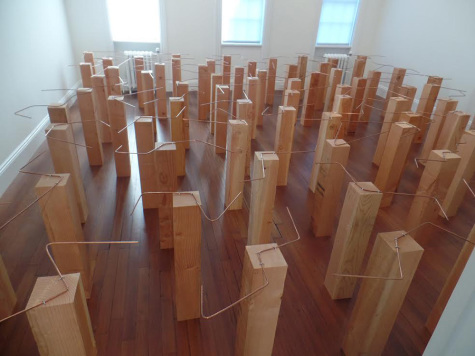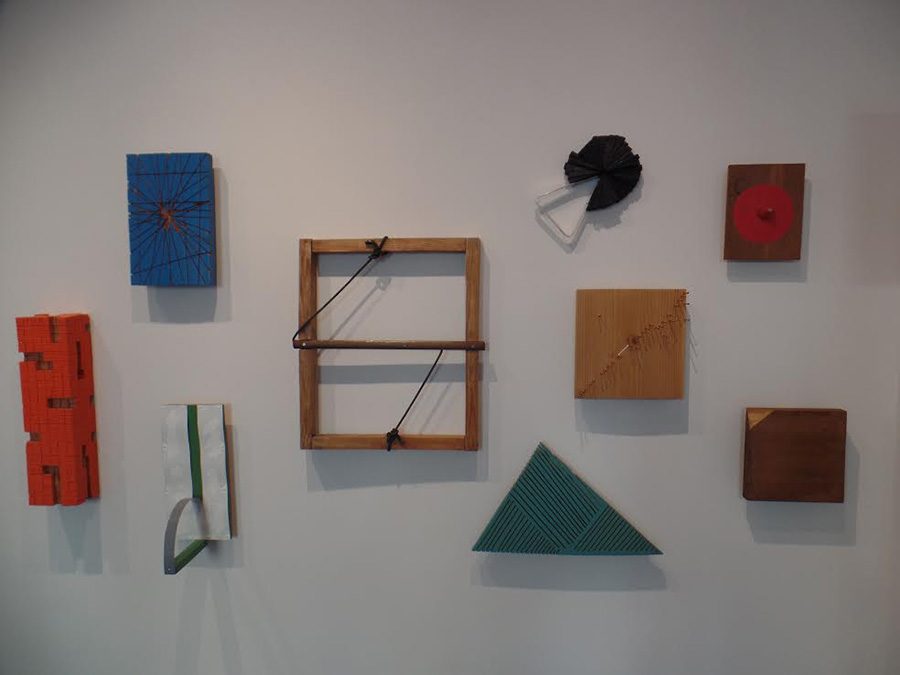Kishio collection full of surprises, humor
Through his simple yet aesthetic pieces, Suga reimagines everyday objects and materials.
February 10, 2015
To say the works of Kishio Suga on display in the Blum & Poe gallery are unorthodox is an understatement. Located at 19 E. 66th St., the two-floor collection of Suga’s work from the ’70s to the present offers an unusual, diverse and engaging mix. A member of Mono-ha — a Japanese movement that translates to “School of Things” — Suga uses industrial and natural materials such as metal, wire, wood and rope and arranges them into sculptures and statues. Using those tools, Suga makes a truly unique collection.

A large portion of the two-floor setup is wall-mounted works. What is immediately striking is the amazing amount of depth created from wood, metal, glass and cardboard. A very simple stack of cardboard glued together in varying lengths creates a striking wave effect. Similarly, a selective placing of small blocks of wood creates an effect similar to a slowly deconstructed stack of Jenga bricks, with tilting blocks leaning against each other. Each sculpture is markedly distinct from the others, which combine to form a varied, unpredictable collection.

One of the standout pieces in the gallery is also one of its simplest: a block of wood painted yellow with intricate carvings. The carving begins at the edges, which work their way diagonally toward the center. While very simple, its minimalist style and sharp color make it undeniably beautiful.
As part of the collection, Suga also created two rooms of more sprawling works. One room consists of a vertical rope bridge spanning one corner of the room to the next, with collections of rope stacked around the room. The mixture of absurdity and the sharp smell of the rope makes it an unusual sensory experience.

The second installation features an entire room filled with vertical wood pillars and horizontal copper wire, making it impossible to enter the room. Creating a room that is impossible to enter is comical and thought-provoking — visitors must decide between entering and destroying the piece or staying outside and viewing it from a distance. Unorthodox concepts like this one make Suga’s collections a triumphant addition to an artistic community that pushes the definition of art.
Suga’s gallery is on 19 E. 66th St. and runs through Feb. 21.
A version of this article appeared in the Tuesday, Feb. 10 print edition. Email Carter Glace at [email protected]





























































































































































